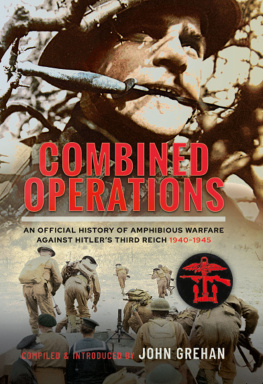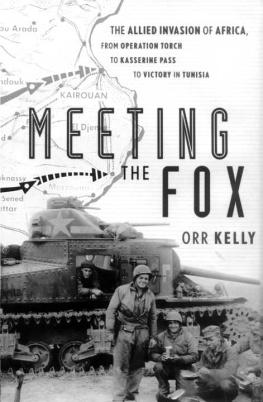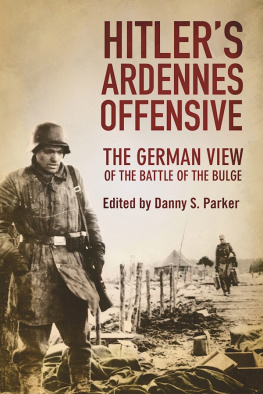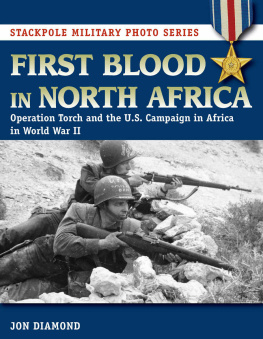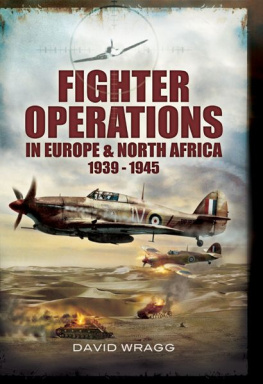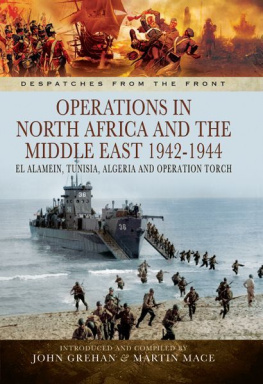

Naval Institute Press
291 Wood Road
Annapolis, MD 21402
2015 by Vincent P. OHara
All rights reserved. No part of this book may be reproduced or utilized in any form or by any means, electronic or mechanical, including photocopying and recording, or by any information storage and retrieval system, without permission in writing from the publisher.
Library of Congress Cataloging-in-Publication Data
OHara, Vincent P., 1951
Torch: North Africa and the allied path to victory / by Vincent P. OHara.
1 online resource.
Includes bibliographical references and index.
Description based on print version record and CIP data provided by publisher; resource not viewed.
ISBN 978-1-61251-922-7 (epub) 1. Operation Torch, 1942. 2. World War, 19391945CampaignsAfrica, North. I. Title.
D766.82
940.54231dc23
2015021812

 Print editions meet the requirements of ANSI/NISO z39.48-1992 (Permanence of Paper).
Print editions meet the requirements of ANSI/NISO z39.48-1992 (Permanence of Paper).
23 22 21 20 19 18 17 16 15 9 8 7 6 5 4 3 2 1
First printing
Contents
Guide
Photos
Maps
Tables
I deeply appreciate the help I received writing this book. First I thank my wife, Maria, and my familymy daughter Yunuen and son Vincent. Their patient support is the foundation of my work. I thank my father, Vincent P. OHara Sr., for reading, commenting, and providing a moral and intellectual compass. My friend and collaborator, Enrico Cernuschi, shared photographs, material, and his fresh point of view. Michael Yakovich and Leonard Heinz reviewed the entire manuscript and made many helpful suggestions. I thank Barbara Tomblin and Robert Stern, who shared material from their own projects, and the editors of the excellent annual Warship, John Jordan and Stephen Dent, for illustrations and permission to adapt maps from the annuals 2012 edition. Jody Mishan generously permitted me to use photographs taken by her father, Lt. (jg) John Mishanec. Jon Parshall improved the books maps with advice and tools. I also thank David Diaz for library access. The staff at Naval Institute Press has been, as always, a pleasure to work with, especially Tom Cutler, who has always advanced my work, and Janis Jorgensen, who searched the photographic archives. I retain responsibility for all errors and interpretations of fact.
A particular fierceness seems to attend battles waged at the waters edge.
JOHN LORELLI
I n September 1940 a British fleet embarking Royal Marines and Fighting (or Free) French troops sailed to capture Dakar in Senegal, a colony of the neutral tat Franais (or French State). Great Britains prime minister, Winston Churchill, anticipated that the very sight of the great armada majestically steaming toward them would precipitate Dakars surrender. Instead the city resisted. Battleships and cruisers tried to bombard Dakar into submission, but after three days Great Britains first major amphibious operation of World War II ended in failure when a French submarine torpedoed and nearly sank the battleship Resolution. Churchill called it bad luck and rightfully noted that it illustrated the difficulties of [amphibious] operations, especially where allies are involved. The military conundrum that faced the Anglo-American alliance in early 1942 was that Germanys smashing victory over France and the United Kingdom in June 1940 had denied the Allies a continental foothold. Thus, the road to victory would begin on a beach. There was no other choice.
Naturally, the United States and the United Kingdom sought to address this problem according to their own concepts of warfare. Based on experiences at the Castillo de Chapultepec and the Bloody Road to Richmond, American generals believed that victory came from hitting the enemy hard in the heart of his strength. The British, on the other hand, had a tradition of standing offshore and fighting continental powers through economic means, such as with blockades, proxies, peripheral operations as in the Crimean War, and interventions in the enemys hour of weakness, as at Waterloo. In terms of this tradition, the fielding of a mass land army in 1916 had been a horrible mistake. There was no military imperative to mount a risky amphibious assault across a beach in northern France as the Americans desired, especially not with a blockade in place and strategic airpower available to accelerate the enemys economic collapse, and with the Soviet Union already heavily engaged.
In early 1942 the leaders of the Anglo-American alliance had to consider a range of political problems as well. First was the matter of the Soviet Union: At the time, Russias survival seemed questionable. There was tremendous popular demand for the Allied governments to do something, anything, to help the Soviets. Then there was Japan: After Pearl Harbor the American public cried for revengethe more so because nearly all families receiving War Department condolences had sons fighting in the Pacific. The Anglo-American political and military leaders, however, agreed that their efforts should focus on Germany as the most dangerous foe, not Japan. Their need to shape public opinion made it essential for the Americans to start fighting Germans as quickly as possible, ideally before the U.S. elections in November. This meant that the Allies had to mount a major military operation in 1942 against the Germans. What choices were there? Not many, and each one started on a beach.
The Axis leaders knew that the seafaring Anglo-Saxons could attack in a meaningful way only by landing an army on the continent. Adolf Hitler and Benito Mussolini, and their military chiefs, studied amphibious operations undertaken by the British at Gallipoli, Norway, Dakar, and Dieppe and regarded the inevitable invasion as an opportunity. A disaster on the beach, particularly a defeat of the untested Americans, would, according to their calculations, force the Allies to seek terms. And who can say they were wrong? The Allies absolutely could not afford a fiasco in their first major joint amphibious offensive. A bloody repulse might have caused the United States to turn to the Pacific. A massacre might have been the final nail in the Churchill governments coffin, opening the doors of Whitehall to advocates of peace. At the very least, failure would postpone the threat of a second front and allow Germany to settle with the Soviet Union through force, diplomacy, or perhaps a mixture of both.
Washington and London appreciated the risks just as clearly as Berlin and Rome. Nonetheless, the need to conduct a successful, mutually agreeable, large-scale land operation against the Germans, an operation that would also help the Russians, forced them to compromise vastly different strategic concepts and to undertake a risky amphibious offensive before they were ready to do so. It forced them to undertake Operation Torch, an invasion of French territory in North Africa.
Torch was, depending on the observers perspective, brilliant or stupid, it was desperate or conservative, it was aggression or liberation. The logic of fighting Germans and helping Russia by attacking neutral territory in Africa, a thousand miles from the nearest German soldier, was so subtle that the invasion caught the Axis completely by surprise. Torch required an enormous amount of shipping at a time when German submarines were ravaging Allied traffic in the Atlantic and British imports were not sustaining the United Kingdoms economy. It forced London and Washington to learn how to fight together. It determined the future of Allied strategyfor better or worseby precluding an invasion of northern France in 1943 as the American Joint Chiefs of Staff (JCS) so ardently desired. Torch was a rushed, half-baked experiment in the art of war, full of untested ideas and amateur touches. The politicians mandated it for political reasons over the objections of most of their military chiefs.
Next page




